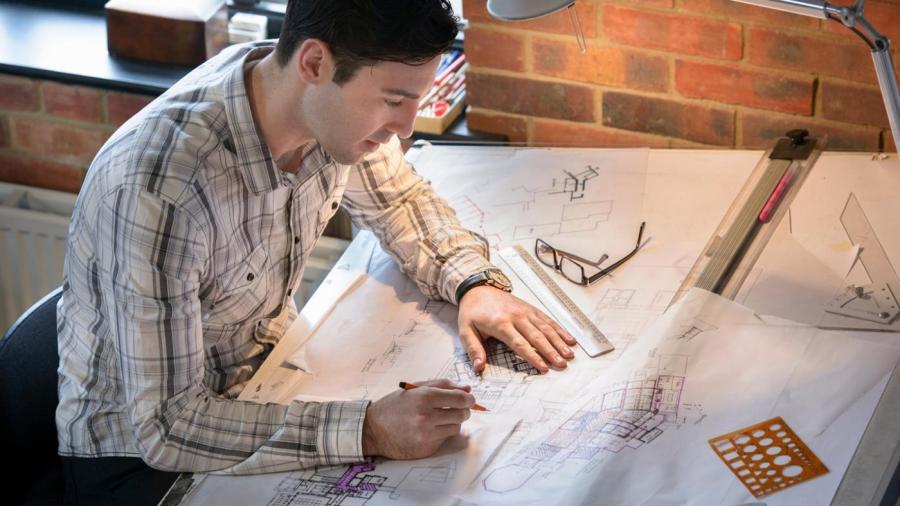How Is Geometry Used in Real Life?

Many occupations including architects, designers, farmers, construction workers and medical professionals incorporate geometric concepts into their work. Even individuals outside of these professions use geometry when measuring walls, calculating how much paint is needed for a project or determining whether new furniture can fit through a door. Geometry is a practical guide for measuring lengths, areas and volumes.
Geometry focuses on the properties of space and figures. It simplifies calculating area, perimeter and volume. It also helps people understand objects spatially, conceptualizing how the position, size and shape of a space relate to the things inside that space. For instance, if someone wants to buy a new dishwasher, knowing how that appliance fits spatially with the other cabinets, furniture and appliances in the room helps to determine what type or size of dishwasher to purchase.
Designers and architects deal with three-dimensional figures constantly. Geometry helps determine how a building, something composed entirely of three-dimensional shapes, is constructed. Medical professionals make use of geometric imaging with technology such as CT scans and MRIs.
Mapping also requires a solid foundation in geometry. Occupations that involve surveying, navigation and astronomy use maps to illustrate where things are located. Looking at maps requires geometry as well. Maps spatially display where a destination is, and through measurement, help determine how long it takes to get there.





